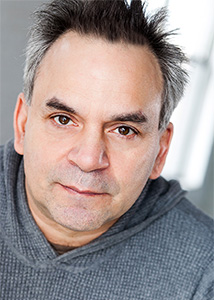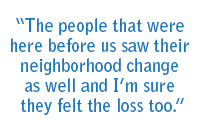 Writer and performer Peter Carlaftes was born and raised in the Bronx. He has published works in all genres: playwriting (including the spoof “Spin-Dry”), comic writing (the recent “A Year on Facebook”), and collections of poetry (including “Drunkyard Dog”). In addition, he and his partner, Kat Georges, own and run Three Rooms Press, a leading independent publisher of “cut-the-edge” creative writing.
Writer and performer Peter Carlaftes was born and raised in the Bronx. He has published works in all genres: playwriting (including the spoof “Spin-Dry”), comic writing (the recent “A Year on Facebook”), and collections of poetry (including “Drunkyard Dog”). In addition, he and his partner, Kat Georges, own and run Three Rooms Press, a leading independent publisher of “cut-the-edge” creative writing.
Growing up in the Bronx after his parents divorced, writer Peter Carlaftes did a lot of bouncing around. “I lived with all my relatives and was all over the place,” he says. “It’s not much of a tale, though. I enjoyed my handball and the streets, but the Bronx never really appealed to me. I always came down to the city and a lot of times I’d wind up in the West Village. I was always looking up so much I’m surprised no one cut my throat!” He laughs. “My upbringing certainly affected me as a person, but it’s nothing I haven’t dealt with and put into perspective.”
Besides, Carlaftes found that he could take care of himself. “Even though the particulars of my life weren’t secure, I always had a sense of security inside myself,” he says. “I’m also mostly self-educated and I was a good student as far as that goes. I did a lot of work on my own. Mostly I was just huffing around trying to figure out a way to make my dream come true, which was to be a writer.”
How did he make that happen? “I started out writing back in the 70s,” he replies. “I wrote a lot of short stories about crazy things in my life, kind of like Charles Bukowski but in my own voice, of course. It wasn’t until the 90s when I was out in San Francisco that I got involved in writing plays. In doing so I ran into my partner, Kat. She had a theatre and we turned that into a den of creativity for ten years. It was a great experience, making sure the audience had a place to get away to and be inside of another creation. There’s a day-to-day horror that most people get swept up by and art is definitely a way out of that.”
At the same time, the couple began Three Rooms Press when they started stapling chapbooks together with their own and other people’s poetry. Over twenty years later, Carlaftes claims there’s a certain brand that the Press is known for. “There’s a key component that I can’t really describe,” he says. “It’s always different from the other stuff but it’s still going to shine. I do know it’s got to be something that inspires. That’s a necessity. If you can’t be somewhat open in art there’s not much room to go forward. I have no judgments on anyone else’s process, but for me that’s the criteria.” In fact, this is key to Carlaftes’ art. “The most important thing is not just to be heard, but to inspire in a way that others can find those feelings in themselves and continue them,” he says. “It’s passing it along because you’re inspiring others by what inspired you. I think that’s the ideal.”
 Carlaftes lived on Charles Street in the late 70s and early 80s, moved to San Francisco, and then moved back here to Bleecker Street in 2003. What was the difference between those periods? “It was a lot less chichi back then,” he says. “Just a little more solid than other neighborhoods. It was a true village. You can say that now, too, if you didn’t know it then. But there’s really no more regulars or neighborhood people. And there’s nothing new that’s lasting. I don’t want to complain or seem backwards but I see something that I don’t particularly care for.” Then he thinks for a moment. “You know, the people that were here before us saw their neighborhood change as well and I’m sure they felt the loss too,” he continues. “It’s not easy and it takes a lot of work but whatever you’re feeling, you’ve got to rewire yourself and look at it in a positive way.”
Carlaftes lived on Charles Street in the late 70s and early 80s, moved to San Francisco, and then moved back here to Bleecker Street in 2003. What was the difference between those periods? “It was a lot less chichi back then,” he says. “Just a little more solid than other neighborhoods. It was a true village. You can say that now, too, if you didn’t know it then. But there’s really no more regulars or neighborhood people. And there’s nothing new that’s lasting. I don’t want to complain or seem backwards but I see something that I don’t particularly care for.” Then he thinks for a moment. “You know, the people that were here before us saw their neighborhood change as well and I’m sure they felt the loss too,” he continues. “It’s not easy and it takes a lot of work but whatever you’re feeling, you’ve got to rewire yourself and look at it in a positive way.”
And these days, even some of Carlaftes’ offspring have ended up in the neighborhood. “One of my sons works at Kettle of Fish—which used to be The Lion’s Head—on Christopher Street. Drop in and say hello to Dylan. I named him after Dylan Thomas, and his middle name is O’Neill. Now he’s around liquor all day so I don’t know how good that is!” he says laughingly.
Photo: Matthew Murphy
